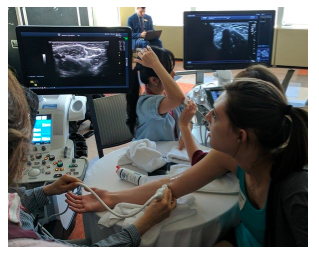Sonographer regulation: A win-win for patients and practitioners
 In a move that will benefit both patients and practitioners, the Ontario government recently passed the “Strengthening Quality and Accountability for Patients Act” that includes Diagnostic Medical Sonographers (DMSs)
In a move that will benefit both patients and practitioners, the Ontario government recently passed the “Strengthening Quality and Accountability for Patients Act” that includes Diagnostic Medical Sonographers (DMSs)
becoming regulated under the Regulated Health Professions Act (RHPA) by the College of Medical Radiation Technologists of Ontario (CMRTO). This is a historic and meaningful step that will help grow the Sonography profession and increase the standard of care to patients in Ontario.
Sonographers and their supporters have been trying to achieve regulation for over 20 years. In 2013, as the official voice and advocacy association for Sonographers, Ontario Association of Medical Radiation Sciences (OAMRS) submitted a comprehensive proposal for regulation of Sonographers to the Health Professions Regulatory Advisory Council (HPRAC). After years of lobbying and meetings with key stakeholders on behalf of Ontario Sonographers, it was announced that Sonographers would be regulated by the CMRTO beginning in 2018.
Sonographers will now join the 28 other regulated health professions under the RHPA.
What This Means for Sonographers
The new regulation benefits both practicing and soon-to-be Sonographers as it raises the profile and credibility of the profession by requiring minimum entry to practice standards to practice. It legitimizes the educational qualifications and certification exam requirements for Sonographers and through this function, will also prevent unqualified practitioners from entering the system and establishes a disciplinary framework to manage professional misconduct. Up until now, there has been no recourse for removing incompetent practitioners from practicing, however CMRTO will now be the official, legal regulatory authority that is backed by law.
The new regulatory framework will create accountabilities for Sonographers and by virtue, also command an increased respect for the profession. The regulation also adds a Sonographer presence to the CMRTO council providing Sonographers with a voice that was previously unheard among policy and decision makers in the healthcare system.
External Impacts
Ultimately, this regulation in the best interest of the public. When people go to a hospital or clinic they can now be assured they will be treated by a regulated health professional like they would when they see a doctor, nurse or surgeon. The regulatory body, in this case, the CMRTO provides an accountability mechanism for patients to voice concerns or complaints if they feel they haven’t been treated effectively by their DMS.
Hospitals and clinics will benefit from a standardized system that ensures they hire only legitimate and qualified Sonographers. Through the public record, on the regulatory college website, employers can search the candidate’s name and verify their registration status with the CMRTO and can even view any infractions issued against them by patients or employers and subsequent disciplinary actions such as fines, suspensions or license revocation.
What The Future Looks Like
All practicing and entering DMSs will be required to pass an accredited college or university program and a certification exam approved by the CMRTO to receive their protected title that will allow them to practice the profession in Ontario.
The work of DMSs is integral to the strength of our health care system. The regulation of these highly trained medical professionals ensures patients across Ontario have access to safe and effective diagnostic services.
By: Greg Toffner
For more information on Sonographer regulation, visit OAMRS.org.
Greg Toffner is President & CEO, OAMRS.









